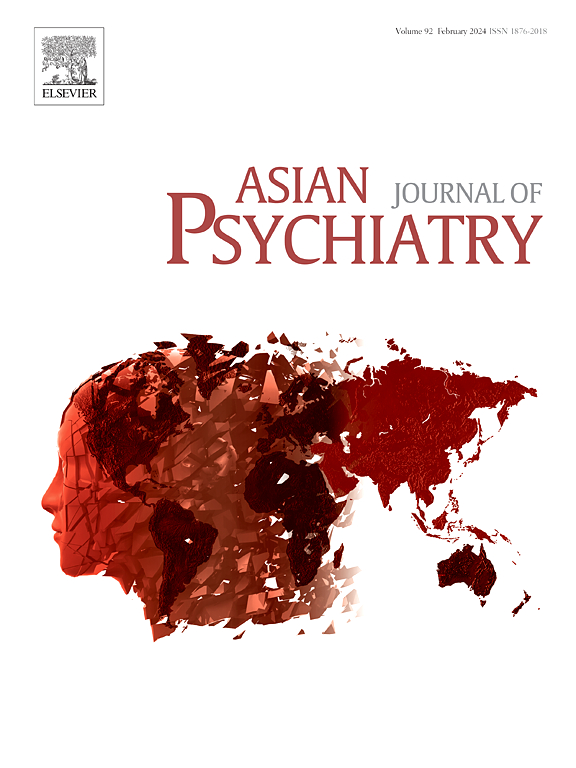Beyond the human touch: A critical review of the promise and challenges of animal- and robot-assisted therapy in loneliness and mental healthcare
IF 4.5
4区 医学
Q1 PSYCHIATRY
引用次数: 0
Abstract
Mental health disorders, including depression, anxiety, post-traumatic stress disorder, and dementia, are increasingly recognized as exacerbated by social isolation and loneliness, prompting growing interest in Artificial Intelligence (AI) driven and robotic interventions for social support. Traditional interventions such as animal-assisted therapy (AAT) have demonstrated effectiveness by leveraging the human-animal bond to reduce stress, enhance social engagement, and improve emotional well-being. However, AAT faces logistical challenges, including availability, cost, and animal welfare concerns. In response, robot-assisted therapy (RAT) has emerged as a scalable alternative, offering consistent social interaction and emotional support without the limitations of live animals. Advances in AI have enhanced RAT’s potential by enabling more adaptive, engaging interactions, yet questions remain regarding these connections' emotional significance and depth. This review critically evaluates the efficacy of AAT and RAT in addressing mental health disorders, comparing their impact on loneliness, stress, and mental health outcomes. While AAT has demonstrated moderate yet significant benefits across various populations, its accessibility remains limited. Early RAT studies suggest potential in mitigating loneliness and improving mood, particularly in older adults and individuals with neurodevelopmental disorders. However, methodological limitations and uncertainties about emotional depth persist. Future research should enhance robotic interventions through greater emotional responsiveness, personalization, and long-term engagement. Ethical concerns surrounding data privacy and user attachment must be addressed to ensure responsible implementation. By examining the strengths and limitations of both approaches, this review discusses the evolving role of social robotics in mental healthcare, highlighting the need for further investigation to optimize therapeutic potential.
超越人类的触摸:对动物和机器人辅助治疗在孤独和心理健康方面的前景和挑战的批判性回顾
心理健康障碍,包括抑郁、焦虑、创伤后应激障碍和痴呆症,越来越多地被认为会因社会孤立和孤独而加剧,这促使人们对人工智能(AI)驱动和机器人干预社会支持的兴趣日益浓厚。传统的干预措施,如动物辅助疗法(AAT),通过利用人与动物的联系来减轻压力,增强社会参与,改善情绪健康,已经证明了其有效性。然而,AAT面临着后勤方面的挑战,包括可用性、成本和动物福利问题。作为回应,机器人辅助治疗(RAT)已经成为一种可扩展的替代方案,提供一致的社会互动和情感支持,而不受活体动物的限制。人工智能的进步通过实现更具适应性、更有吸引力的互动,增强了RAT的潜力,但关于这些联系的情感意义和深度的问题仍然存在。本综述批判性地评估了AAT和RAT在解决精神健康障碍方面的疗效,比较了它们对孤独感、压力和精神健康结果的影响。虽然AAT在不同人群中显示出适度但显著的益处,但其可及性仍然有限。早期的大鼠研究表明,它有减轻孤独感和改善情绪的潜力,尤其是对老年人和神经发育障碍患者。然而,方法上的局限性和情感深度的不确定性仍然存在。未来的研究应该通过更大的情感反应、个性化和长期参与来增强机器人干预。必须解决有关数据隐私和用户附件的道德问题,以确保负责任的实施。通过研究这两种方法的优势和局限性,本文讨论了社交机器人在精神卫生保健中的发展作用,强调了进一步研究以优化治疗潜力的必要性。
本文章由计算机程序翻译,如有差异,请以英文原文为准。
求助全文
约1分钟内获得全文
求助全文
来源期刊

Asian journal of psychiatry
Medicine-Psychiatry and Mental Health
CiteScore
12.70
自引率
5.30%
发文量
297
审稿时长
35 days
期刊介绍:
The Asian Journal of Psychiatry serves as a comprehensive resource for psychiatrists, mental health clinicians, neurologists, physicians, mental health students, and policymakers. Its goal is to facilitate the exchange of research findings and clinical practices between Asia and the global community. The journal focuses on psychiatric research relevant to Asia, covering preclinical, clinical, service system, and policy development topics. It also highlights the socio-cultural diversity of the region in relation to mental health.
 求助内容:
求助内容: 应助结果提醒方式:
应助结果提醒方式:


